A Man Renovating His Home Discovered a Massive Underground City*
Sep12
A Man Renovating His Home Discovered a Massive Underground City*

In 1963, a man in the Nevşehir Province of Turkey knocked down a wall of his home. Behind it, he discovered a mysterious room and soon discovered an intricate tunnel system with additional cave-like rooms. What he had discovered was the ancient Derinkuyu underground city in Turkey.
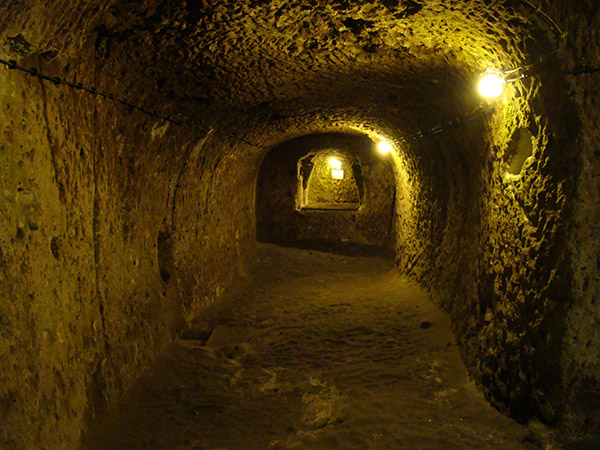
The elaborate subterranean network included discrete entrances, ventilation shafts, wells, and connecting passageways. It was one of dozens of underground cities carved from the rock in Cappadocia thousands of years ago. It remained hidden for centuries.
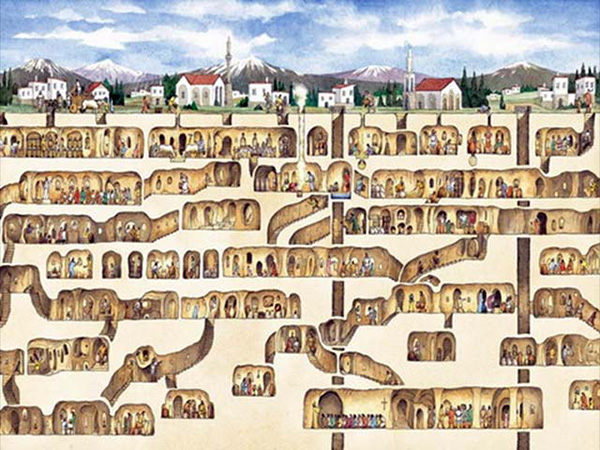
The underground city at Derinkuyu is neither the largest nor oldest, but its 18 stories make it the deepest…
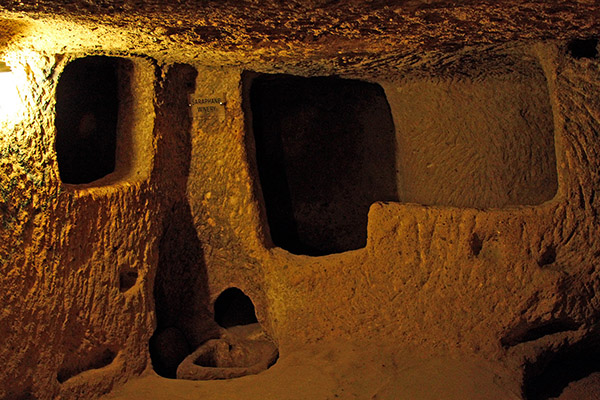
It had access to fresh flowing water — the wells were not connected with the surface to prevent poisoning by crafty land dwellers. It also has individual quarters, shops, communal rooms, tombs, arsenals, livestock, and escape routes. There’s even a school, complete with a study room.
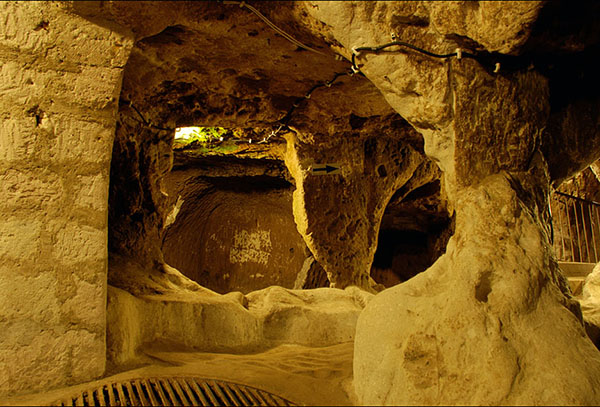

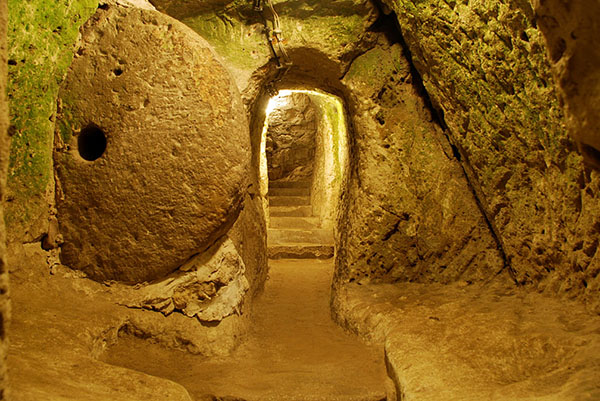
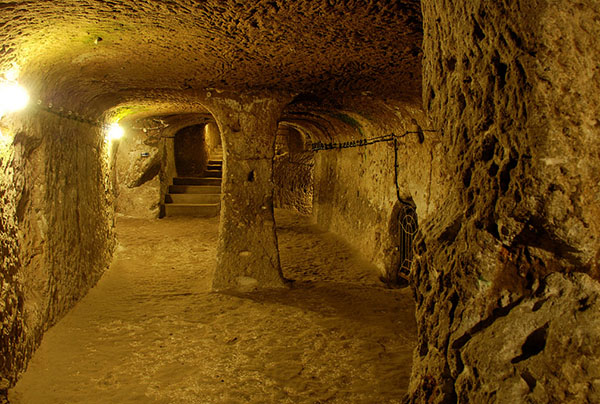
And to think all this was discovered because someone decided their home needed some “updating”.
Source*
Over 200 underground cities at least two levels deep have been discovered in the area between Kayseri and Nevsehir, with around 40 of those having at least three levels. The cities at Derinkuyu and Kaymaklı are two of the best examples of underground dwellings.

The massive circular doors – These circular doors are visible at all the local underground sites. They were rolled across the passages and sealed the citadels from the inside. At Derinkuyu each level could also be sealed individually.
Since you cannot carbonate stone, it is hard to date the age of Derinkuyu Underground City.
The city could accommodate between approximately 30,000 people and had all the usual amenities found in other underground complexes across Cappadocia, such as wine and oil presses, stables, cellars, storage rooms, refectories, and chapels. Between the third and fourth levels is a vertical staircase. This passage way leads to a cruciform church on the lowest level.

Unique to the Derinkuyu complex, and located on the second floor, is a spacious room with a barrel vaulted ceiling. It has been reported that this room was used as a religious school and the rooms to the left were studies.

First built in the soft volcanic rock of the Cappadocia region, possibly by the Phrygians in the 8th – 7th centuries B.C according to the Turkish Department of Culture, the underground city at Derinkuyu may have been enlarged in the Byzantine era. The city was connected with other underground cities through miles of tunnels.
To this day, no one is certain how it was created and what its original purpose was.
Source*
Related Topics:
Turkey-Iran: An Ancient Language Rediscovered
Between the Builder and the Architect: Frederick II, and the Castel Del Monte
Thanks to: http://hwaairfan.wordpress.com
Sep12
A Man Renovating His Home Discovered a Massive Underground City*

In 1963, a man in the Nevşehir Province of Turkey knocked down a wall of his home. Behind it, he discovered a mysterious room and soon discovered an intricate tunnel system with additional cave-like rooms. What he had discovered was the ancient Derinkuyu underground city in Turkey.
The elaborate subterranean network included discrete entrances, ventilation shafts, wells, and connecting passageways. It was one of dozens of underground cities carved from the rock in Cappadocia thousands of years ago. It remained hidden for centuries.

The underground city at Derinkuyu is neither the largest nor oldest, but its 18 stories make it the deepest…

It had access to fresh flowing water — the wells were not connected with the surface to prevent poisoning by crafty land dwellers. It also has individual quarters, shops, communal rooms, tombs, arsenals, livestock, and escape routes. There’s even a school, complete with a study room.




And to think all this was discovered because someone decided their home needed some “updating”.
Source*
Over 200 underground cities at least two levels deep have been discovered in the area between Kayseri and Nevsehir, with around 40 of those having at least three levels. The cities at Derinkuyu and Kaymaklı are two of the best examples of underground dwellings.

The massive circular doors – These circular doors are visible at all the local underground sites. They were rolled across the passages and sealed the citadels from the inside. At Derinkuyu each level could also be sealed individually.
Since you cannot carbonate stone, it is hard to date the age of Derinkuyu Underground City.
The city could accommodate between approximately 30,000 people and had all the usual amenities found in other underground complexes across Cappadocia, such as wine and oil presses, stables, cellars, storage rooms, refectories, and chapels. Between the third and fourth levels is a vertical staircase. This passage way leads to a cruciform church on the lowest level.

Unique to the Derinkuyu complex, and located on the second floor, is a spacious room with a barrel vaulted ceiling. It has been reported that this room was used as a religious school and the rooms to the left were studies.

First built in the soft volcanic rock of the Cappadocia region, possibly by the Phrygians in the 8th – 7th centuries B.C according to the Turkish Department of Culture, the underground city at Derinkuyu may have been enlarged in the Byzantine era. The city was connected with other underground cities through miles of tunnels.
To this day, no one is certain how it was created and what its original purpose was.
Source*
Related Topics:
Turkey-Iran: An Ancient Language Rediscovered
Between the Builder and the Architect: Frederick II, and the Castel Del Monte
Thanks to: http://hwaairfan.wordpress.com






 Sat Mar 23, 2024 11:33 pm by globalturbo
Sat Mar 23, 2024 11:33 pm by globalturbo

